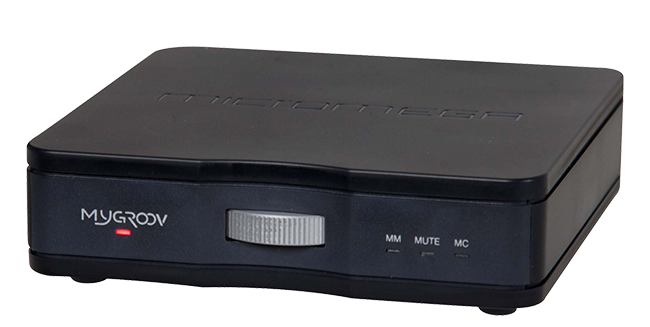Letter from NYC (39) 2015 (1): Dayton Audio B652 redux
Review: Dayton Audio B652, Part II
What does it take to enjoy music?
Certainly no fanciful equipment is needed. A good proof is that most musicians and music professionals do not get into hifi. And many are even suspicious of our hobby and us, for good reasons I'd say!
Neither are comfortable circumstances mandated (think of your listening seat, called the "emperor's seat" in the Chinese hifi world). Even wretched souls in great suffering, like those incarcerated in concentration camps, could enjoy music for some relief. The great Szigeti wrote about the time he heard the great Busch in an over-crowded and over-heated place, and how the playing made him forget everything else.
One can enjoy music anywhere unplugged. Birdsongs are music to the great Messiaen, whose hearing I am sure was more acute than ours.
On the plane When I fly long-distance, I do not use my iPod Classic (filled with lossless files) nor fanciful earphones. The space is cramped, the engine noise loud and the journey uncomfortable enough to fuss over such matters, though I can understand why some like music on the go, for travellers and joggers etc. No, it is better not to have to wear earphones, if possible. I am not sure I understand those who do so outside of professional or family needs. But that is my perspective, as even no less a loudspeaker design legend than Infinity's Arnie Nudell praises the sound he gets from top earphones (few are his choices, and he is discriminating).
Yet on occasion, I could enjoy music through earphones. On my flight back to NYC a few days ago, I enjoyed Bruckner's Symphony No. 4 from the earphones provided. Yes, the sound was not so good, and one could hardly hear the quiet passages, yet the spirit and greatness of the work came through. And, the excellence of the performance came through too; one could tell it is excellent orchestra under a thoughtful conductor. My only complaint is that there is no credit. Should that not be mandatory? I always want to know who is playing, to the extent that when I hear a bad performance on radio I will stay to the end to hear the announcement to find out who. Waste of time? Not sure.
As the plane began the landing routine, which is always LONG for the JFK airport, I enjoyed the music played over the cabin. Good choice! Bach, Mozart and others cheered my battered body.
Back Home Usually the first system I have running is my Casual System (see sidebar), perhaps the only thing that can be termed "cheaptube" at home (and not even all tube at that). In the wee hours, before the rest of family wake up, I listen at very low volume. Mind you, this is actually a difficult task for a system, even the most expensive ones, as it has to be very good at microdynamics to keep the listener's interest. But this is infinitely preferable to listening with earphones.
My humble one does. With the help of the Audio Research SP-9 preamp and McIntosh MC-2200 amp, the Audio-Technica AT-PL120 (a DJ turntable) with Grado Gold cartridge captured all the nuance in Busch's playing on a few Busch LPs I just acquired. That is not surprising. What is surprising is that all this is through a pair of under-$40 Dayton Audio B652!!
Part I of my Dayton B652 Review is here.
I just noticed Dayton now has an "upgraded" version, the B652-AIR, which sports a new tweeter, undoubtedly a response to the many who feel the tweeter of the B652 is too hot (not in my system though). I don't plan to acquire one so I'd not know whether there is an improvement.
Maybe all one needs to do is to pair the B652 (or AIR version) with the $30 (well-regarded) Dayton Audio DTA-1 T-amp, the system coming in under $100. Maybe I'll try this one day.
In the Subway First chance I got, I hit the record store, where I got my three Busch LPs. In passing, let me recall an anecdote. As another kindred soul and I scoured the bargain bins, which was filled with mono classical LPs, we talked about replaying mono records and the merits of mono cartridges (all the rage now). This other man, who had been gathering a huge pile of records, many mono ones, started to talk to me. He waxed lyrics about his Miyajima Zero mono cartridge. For stereo he uses a Sumiko Palo Santos (no slouch I am sure) on his VPI HR-X turntable. Yet he said he prefers the Zero's dynamic prowess and now regrets the mono LPs he has cast away. Well, one day I'd like to hear the Zero too! Happy listening!
This is another thing, do we need millions of dollars of equipment to listen to frequency-limited recordings that are mono's? Judging by the increasing number of monophiles, maybe we should not question it, rather ask why after decades of this "absolute sound" business mono appeals?
On the way back, in the subway I heard good fiddling with pounding drum, some kind of new age act that mixes Bach with hip-hop. I got closer and saw their names, Yut and the Hot Four (just two on this occasion). It sounded good; I made a donation and got on the train. Back home, I googled and found this kid's interesting bio, and below is a youtube fragment.
If you love music, you can enjoy it anywhere, anytime. No expensive equipment is needed. There are just too many unhappy audiophiles. It occurred to me all the crazy customers (often with a gleam in their eyes) in the record store, many of whom listening only on humble equipment, enjoy music! That is the way to go, enjoy your music - hifi is just a means, not an end.


















